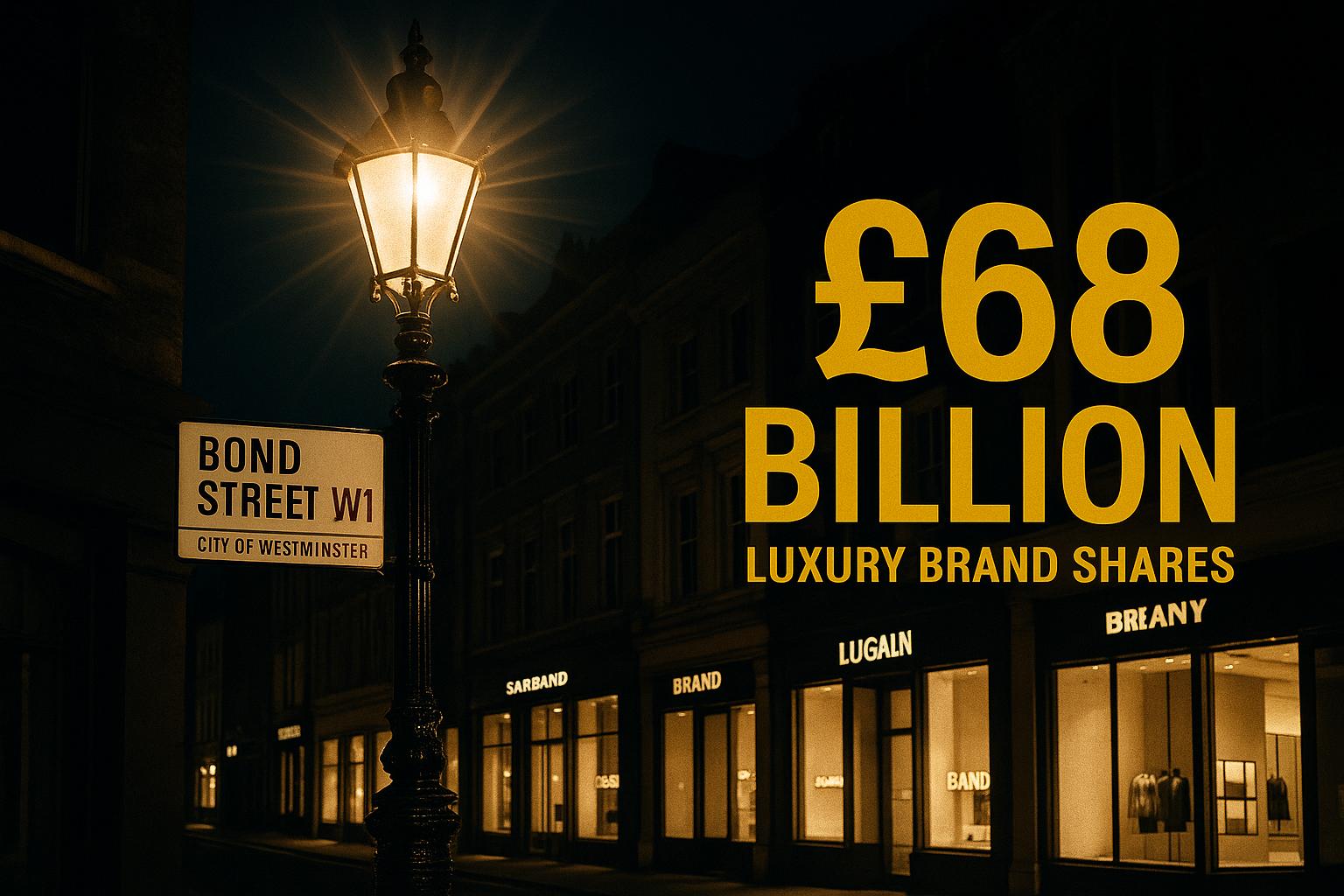As the Christmas lights prepare to illuminate London's prestigious Bond Street and Sloane Street, the allure of luxury boutiques invites both shoppers and investors to contemplate indulgence in high-end fashion and accessories. This festive season, beyond window shopping, investors are weighing the merits of adding shares of luxury brands to their portfolios, considering the volatile journey these companies have experienced.
Luxury brands, which faced significant challenges in the 1990s, successfully revitalised their appeal by courting younger and more diverse consumer bases. Today, this same strategy is being employed again amid fresh difficulties, sparking a remarkable £68 billion surge in share prices in recent weeks. The French conglomerate Kering, owner of Gucci, which has struggled recently, is actively restructuring, notably through the landmark €4 billion sale of its beauty division to L’Oréal. This transaction, anticipated to conclude in the first half of 2026, not only involves the House of Creed fragrance but also licences for the production of beauty and fragrance products linked to Gucci, Balenciaga, and Bottega Veneta. Both companies plan collaborations in wellness and longevity, merging L’Oréal’s innovation with Kering’s luxury market expertise.
Kering’s shares have risen 41% year-to-date, reflecting cautious optimism. However, Gucci continues to face challenges, with third-quarter sales down 14% while showing signs of improvement in the Chinese market. The brand's future depends substantially on new creative directions aiming for a bold revitalisation, guided by Luca de Meo, who draws on his successful turnaround of Renault in navigating Kering’s path forward.
Meanwhile, EssilorLuxottica is attracting investor attention, buoyed by the launch of its Ray-Ban smart glasses developed in partnership with Meta, reflecting a seamless blend of luxury and cutting-edge technology. These smart glasses, featuring Meta AI, advanced audio and camera capabilities, and live streaming options, mark an innovative foray into wearable tech, with retail availability expanding across Europe. Analysts foresee smart glasses as potentially the most disruptive innovation since smartphones, supporting bullish perspectives on EssilorLuxottica’s Paris-listed stock. The company has also extended its collaboration with Meta, aiming to shape the future of smart eyewear well into the next decade.
LVMH, the giant luxury group with a diverse portfolio including Dior, Louis Vuitton, and Tiffany, has rebounded 27% in the past six months after a difficult start to the year when shares dropped almost 30% due to sector-wide issues. The group has been investing in creativity and store refurbishments, such as the striking Louis Vuitton store in Shanghai designed like a ship with trunk-inspired upper floors, creating renewed consumer excitement. Industry experts emphasise LVMH's scale and brand strength as key advantages likely to help it outpace competitors when economic headwinds ease.
British luxury heavyweight Burberry has also seen a revival, with its share price up 80% compared to a year ago, though still trailing its three-year peak. The brand’s strategy to attract younger consumers with more affordable offerings and a strong emphasis on British heritage has resonated well, supported by the visibility brought by celebrities such as Olivia Colman and Cara Delevingne. Burberry, back in the FTSE 100, has split analyst opinions but remains a compelling option for investors seeking growth in a recovering luxury sector.
Hermès stands out with steady demand for its artisanal Birkin and Kelly bags, maintaining price resilience despite a modest 5% decline in shares this year. The company's heritage and sustained appeal in major markets, particularly the US and China, reinforce its solid standing amid the luxury market’s fluctuations.
Despite the promising signs of recovery across the luxury sector, some caution remains. Analysts note that while the sharp decline in demand may have tapered off, a full recovery has yet to be confirmed, and structural changes in consumer behaviour, notably among younger shoppers and the evolving Chinese market, could mean slower growth going forward. The pandemic prompted luxury brands to sharply increase prices, sometimes without corresponding improvements in quality or design, a misstep that may dampen future enthusiasm.
In summary, the luxury sector stands at a crossroads, blending innovation, strategic restructuring, and the pursuit of fresh consumer appeal. Investors eyeing a piece of this market’s potential this Christmas must balance optimism about pioneering products and revitalised brands with a watchful eye on ongoing economic and consumer shifts.
📌 Reference Map:
- Paragraph 1 – [1] (Daily Mail)
- Paragraph 2 – [1] (Daily Mail), [2] (AP News)
- Paragraph 3 – [1] (Daily Mail), [2] (AP News)
- Paragraph 4 – [1] (Daily Mail), [3] (EssilorLuxottica), [4] (EssilorLuxottica)
- Paragraph 5 – [1] (Daily Mail)
- Paragraph 6 – [1] (Daily Mail)
- Paragraph 7 – [1] (Daily Mail)
- Paragraph 8 – [1] (Daily Mail)
- Paragraph 9 – [1] (Daily Mail)
Source: Noah Wire Services
